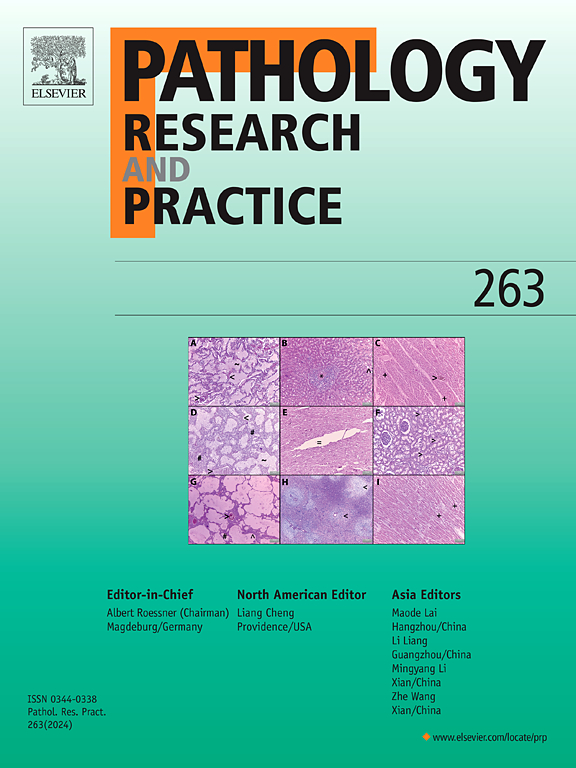Discovering potential therapeutic targets in glioblastoma multiforme using a multi-omics approach
IF 2.9
4区 医学
Q2 PATHOLOGY
引用次数: 0
Abstract
Background
Glioblastoma multiforme (GBM) is a highly aggressive primary brain tumor associated with high fatality rates, poor prognosis, and limited treatment options. In this study, we utilized RNA-Seq gene count data from GBM patients, sourced from the Gene Expression Omnibus (GEO) database, to conduct an in-depth analysis of gene expression patterns.
Methods
Our investigation involved stratifying samples into two distinct sets, Group I and Group II, comparing normal, low-grade, and GBM tumor samples, respectively. Subsequently, we performed differential expression analysis and enrichment analysis to uncover significant gene signatures. To elucidate the protein-protein interactions associated with GBM, we used the STRING plugin within Cytoscape for comprehensive network visualization and analysis.
Results
By applying Maximal clique centrality (MCC) scores, we identified a set of 10 hub genes in each group. These hub genes were subjected to survival analysis, highlighting their prognostic relevance. In Group I, comprising BUB1, DLGAP5, BUB1B, CDK1, TOP2A, CDC20, KIF20A, ASPM, BIRC5, and CCNB2, these genes emerged as potential biomarkers associated with the transition to low-grade tumors. In Group II, genes such as LIF, LBP, CSF3, IL6, CCL2, SAA1, CCL20, MMP9, CXCL10, and MMP1 were found to be involved in the transformation to adult glioblastoma. Kaplan–Meier's overall survival analysis of these hub genes revealed that modifications, particularly the upregulation of these candidate genes, were associated with reduced survival in GBM patients.
Conclusions
The findings established the significance of genomic alterations and differential gene expression in GBM, presenting opportunities for prognostic and targeted therapeutic interventions. This study provides valuable insights into potential avenues for enhancing the clinical management of GBM.
求助全文
约1分钟内获得全文
求助全文
来源期刊
CiteScore
5.00
自引率
3.60%
发文量
405
审稿时长
24 days
期刊介绍:
Pathology, Research and Practice provides accessible coverage of the most recent developments across the entire field of pathology: Reviews focus on recent progress in pathology, while Comments look at interesting current problems and at hypotheses for future developments in pathology. Original Papers present novel findings on all aspects of general, anatomic and molecular pathology. Rapid Communications inform readers on preliminary findings that may be relevant for further studies and need to be communicated quickly. Teaching Cases look at new aspects or special diagnostic problems of diseases and at case reports relevant for the pathologist''s practice.

 求助内容:
求助内容: 应助结果提醒方式:
应助结果提醒方式:


